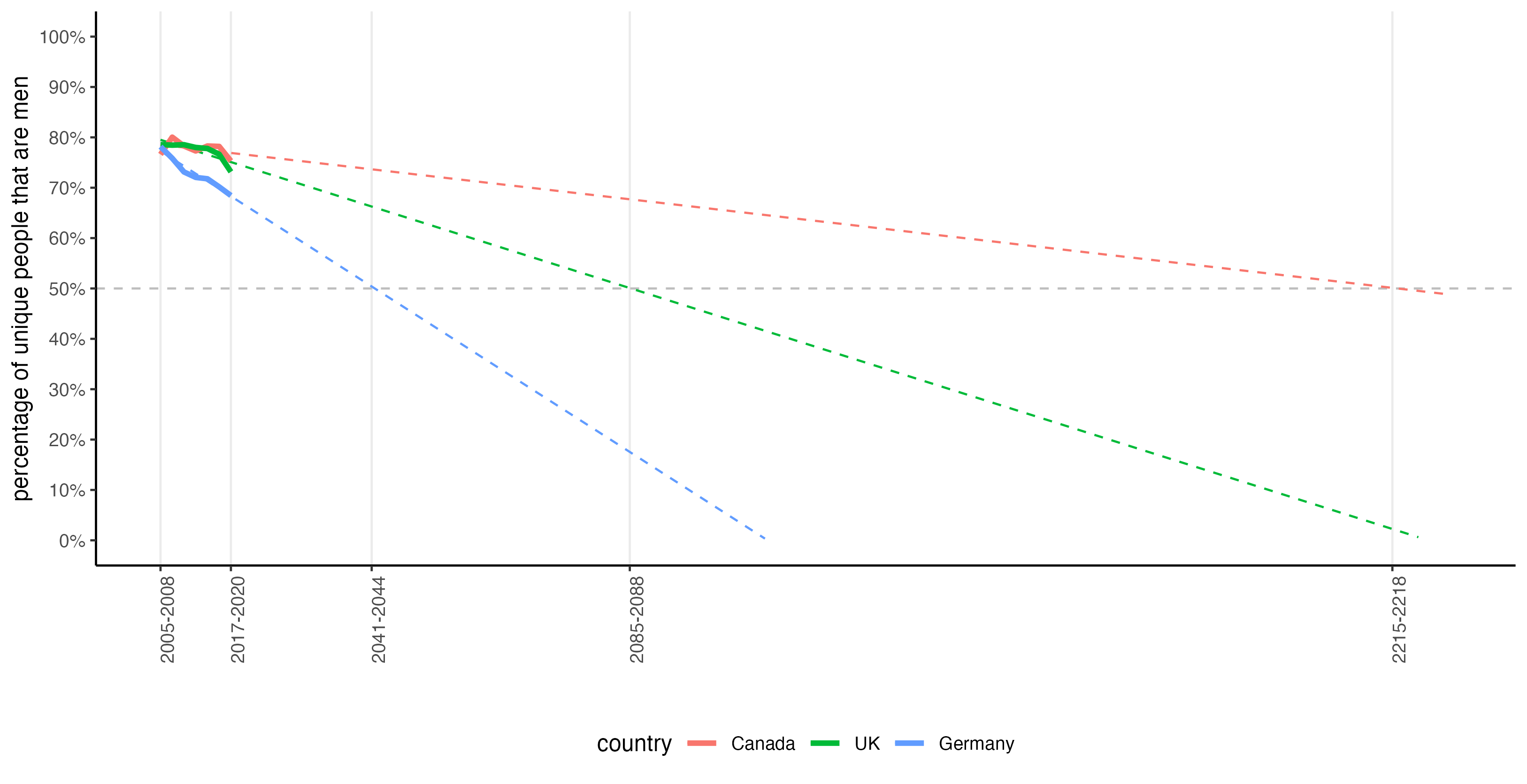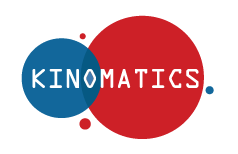Gender Equity Interventions in the Film Industry. What works and what doesn’t?
 A sub-team of kinomatics members (Deb, Pete, Aresh) have been working hard over the past couple of years to test the impact of different hypothetical policy interventions in the film industries of Canada, Germany and the UK. Our effort was part of a larger project coordinated by another kinomatics member – Skadi Loist – at the Film University Babelsberg.
A sub-team of kinomatics members (Deb, Pete, Aresh) have been working hard over the past couple of years to test the impact of different hypothetical policy interventions in the film industries of Canada, Germany and the UK. Our effort was part of a larger project coordinated by another kinomatics member – Skadi Loist – at the Film University Babelsberg.
We used data compiled by (yes, another kinomatics member) Elisabeth Prommer’s team at the University of Rostock which describes the key creatives (producers, writers, directors) attached to feature film projects between 2005 and 2020. From this dataset we created collaboration networks (“what is?”) and then apply different “what if?” scenarios to see what changes occur (or don’t) in these gendered networks. Even though there’s a lot of data variables we can’t account for there’s a few things we can glean (brace yourself).
Key Findings
- Progress is inexorably slow and varies wildly between national film industries. This is surely not much of a surprise to women and gender minorities working in the industry right now. If we just drew a straight line into the future based on the rate of change between 2005 and 2020, men won’t comprise 50% of the key creatives in Germany until some time between 2041–2044; in the UK sometime between 2085–2088; and in Canada basically never with a projected equity period not occurring until 2215–2218
- For the most part the small equity gains that have already occurred did so without displacing men
- Men predominantly collaborate with other men, highlighting a major gender disparity in the way professional networks are formed and perpetuate male dominance.
- Hypothetical modeling of different interventions shows varying success rates across the different industries. And using the “natural experiment” of Germany, which for the most part is the most equitable industry we studied and yet has made very few gender equity policy interventions, it may be that policy itself is not going to be a source of significant solutions anyway. This is a confronting but necessary reflection for many of us who have invested without question in the idea that equity policies are the main avenue to change.
This last finding has several other dimensions – firstly it suggests that there is no one-size- fits-all magic bullet solution. Instead of focusing on “more mentoring!’ or ” bring on quotas!” we need to develop customised policies that are attuned to distinct industry contexts. Secondly – the vast majority of tests we ran made a negligible difference to gender equity and in some cases exacerbated it.
Key Takeaways
We don’t want these somewhat deflating findings to contribute to “data despondency”. There was some good news in amongst the null and negative results. For example, in general, interventions that focus on connecting women and gender minorities to successful men do show some broad potential for accelerating change. And in a tiny subset of the data we could see that accountability-driven policies that tie industry funding and awards to equitable crew composition do seem to be having an effect on reducing the prevalence of all-men teams in the UK and to a lesser extent Canada.
But all in all, we also need to consider one possible conclusion from our research: rather than spend our energy trying to design better or more customised policies we might start by rethinking our aspirations for policy-led solutions altogether. Perhaps, we finally need to concede that gender equity policy has historically worked better as a form of political posturing than as a potent intervention.
Want to know more?
The Full project report can be downloaded from here:
- Loist, S., Verhoeven, D., Eikhof, D. R., Prommer, E., Ehrich, M. E., Jones, P., Guyan, K., Coles, A., Radziwill, S., & Dadlani, A. (2024). Re-Framing the Picture: An International Comparative Assessment of Gender Equity Policies in the Film Sector. Full Report Gender Equity Policy (GEP) Analysis Project. Film University Babelsberg KONRAD WOLF.
A detailed description of how we did the What is? and What if ? analysis can be downloaded here:
- Jones, Pete, Aresh Dadlani, and Deb Verhoeven. 2024. “The Networks: Technical Report for the GEP Analysis Project.” In Technical Appendix of the Gender Equity Policy (GEP) Analysis Project Report “Re-Framing the Picture”, edited by Skadi Loist and Martha E. Ehrich, 43–66. Potsdam: Film University Babelsberg KONRAD WOLF. https://doi.org/10.60529/394
More detail on the different sub-projects in this research are here:
- Guyan, Kevin, Doris Ruth Eikhof, and Amanda Coles. 2024. “The Policies: Technical Report for the GEP Analysis Project.” In Technical Appendix of the Gender Equity Policy (GEP) Analysis Project Report “Re-Framing the Picture”, edited by Skadi Loist and Martha E. Ehrich, 6–33. Potsdam: Film University Babelsberg KONRAD WOLF. https://doi. org/10.60529/392
- Prommer, Elizabeth, Sophie Radziwill, and Martha E. Ehrich. 2024. “The Numbers: Technical Report for the GEP Analysis Project.” In Technical Appendix of the Gender Equity Policy (GEP) Analysis Project Report “Re-Framing the Picture”, edited by Skadi Loist and Martha E. Ehrich, 34–42. Potsdam: Film University Babelsberg KONRAD WOLF. https://doi. org/10.60529/393
Media Coverage:
